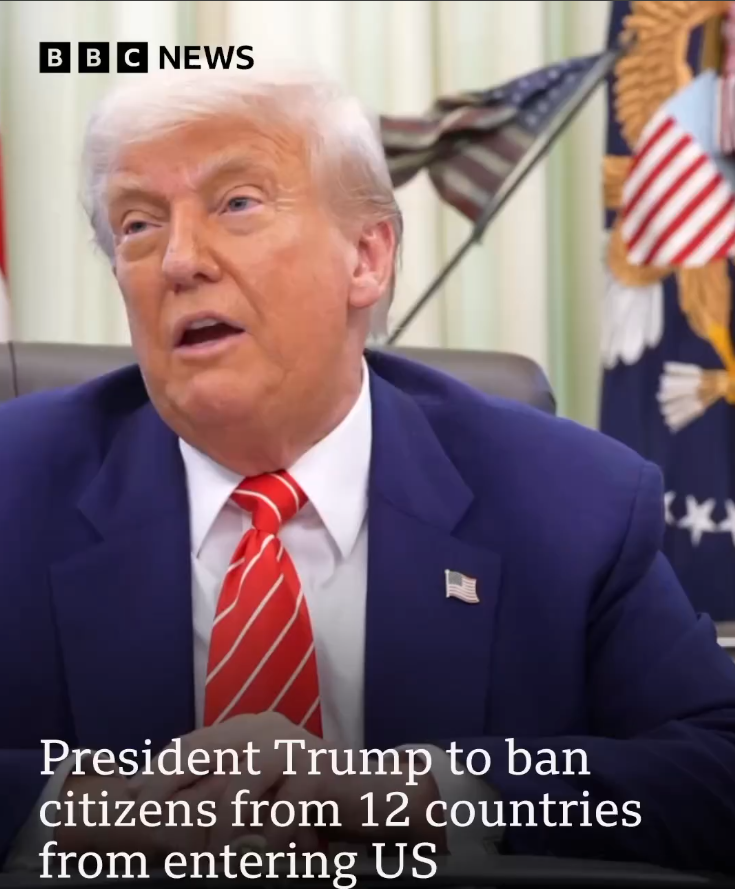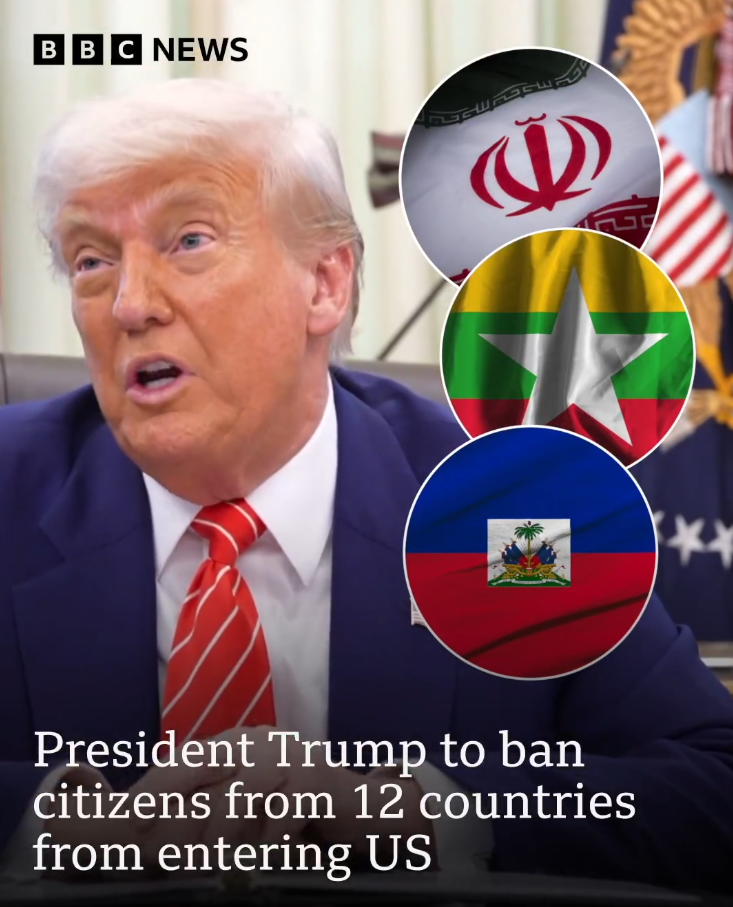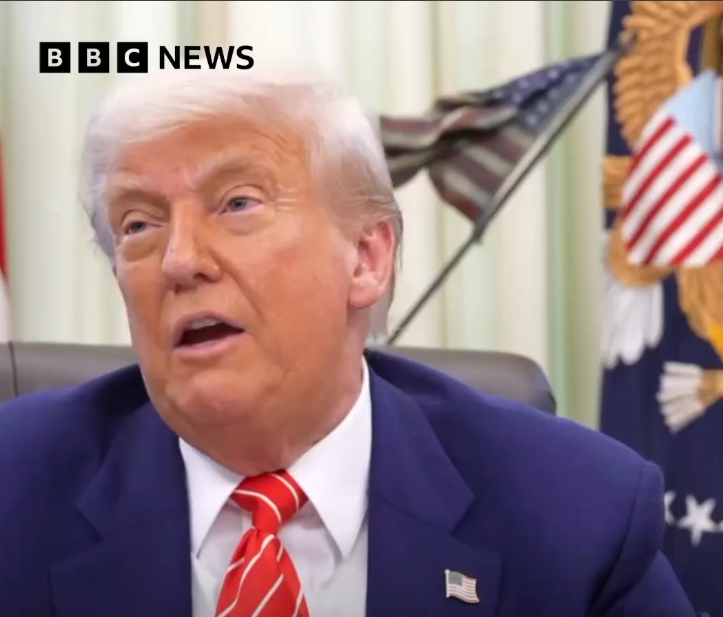
In a move that has sparked global controversy and reignited fierce debate over immigration policy, former U.S. President Donald Trump declared, “We don’t want them,” in reference to citizens from 12 countries now barred from entering the United States. The ban, reinstated and expanded from earlier versions during his presidency, has drawn immediate criticism from human rights groups, foreign governments, and segments of the American public, while being celebrated by supporters who see it as a hardline return to “America First” policy.
This sweeping immigration restriction affects travelers, refugees, and in some cases even green card applicants, from a mix of nations — many with Muslim-majority populations or regions experiencing conflict. The decision, according to Trump, is aimed at protecting national security, but opponents argue it is thinly veiled discrimination rooted in xenophobia and political fearmongering.
The Countries Affected
While the full list has not yet been made official through any legal publication, senior aides close to Trump confirmed that the 12 countries impacted by the ban include: Iran, Syria, Yemen, Libya, Somalia, Nigeria, Sudan, Iraq, Afghanistan, North Korea, Venezuela, and Pakistan. Some of these countries, like Iran and Syria, were also part of Trump’s original travel ban during his 2017 presidency, which faced intense legal challenges but was ultimately upheld by the Supreme Court in a limited form.
Trump’s current rationale focuses on “extreme vetting,” claiming these countries are either unstable, support terrorism, or cannot provide sufficient background checks for travelers seeking entry into the U.S.
“We don’t want people coming in who hate us, who don’t respect our values, or who are dangerous to the American way of life,” Trump told reporters at a rally where he announced the move. “It’s common sense. It’s about safety, not politics.”
Political Fallout

The announcement immediately drew a firestorm of responses from across the political spectrum. Democratic leaders condemned the ban as discriminatory and unconstitutional, pointing to the lack of individualized assessment and the sweeping nature of the restrictions.
“This is not about security. It’s about scapegoating,” said Senate Majority Leader Chuck Schumer. “Trump is once again targeting people based on nationality and religion under the guise of protecting Americans.”
President Joe Biden, who had repealed Trump’s earlier travel bans in 2021 during his own term, released a statement criticizing the policy’s return. “We are a nation built by immigrants, enriched by diversity. This kind of blanket exclusion is morally wrong and strategically short-sighted,” Biden said.
However, Trump’s supporters and many conservative lawmakers praised the move, citing growing concerns over border security and terrorism. “He’s doing what needs to be done to keep Americans safe,” said Sen. Josh Hawley. “The left may complain, but the people see the results.”
Impact on Communities and Families
Beyond the political theater, the human toll of such a policy is immediate and profound. Advocacy groups have raised alarms over thousands of families now facing indefinite separation. Universities and tech companies worry that foreign students and skilled workers from the affected countries will no longer be able to study or contribute to the U.S. economy.
Organizations like the ACLU and Amnesty International have vowed to challenge the ban in court, calling it a gross violation of civil liberties.
“This ban is a moral failure and a legal disgrace,” said Anthony Romero, executive director of the ACLU. “We will fight it in every courtroom and through every available legal avenue.”
Immigrant communities in cities like Minneapolis, Detroit, and Los Angeles — home to many individuals from Somalia, Iran, and Venezuela — have reported a chilling effect. “We’re scared,” said Mariam Osman, a Somali-American teacher in Minneapolis. “We don’t know if we can visit family overseas anymore or if our loved ones will be trapped abroad forever.”
Echoes of 2017
This policy mirrors Trump’s infamous “Muslim Ban” executive order signed in January 2017, which initially targeted seven Muslim-majority countries and led to chaotic scenes at airports nationwide. That version faced widespread protests, lawsuits, and condemnation from both domestic and international bodies.
Legal experts say that while the Trump team may try to package this latest ban under the umbrella of national security, the precedent set in 2017 could serve as both legal ammo and a warning sign.
“It’s déjà vu with a more aggressive tone,” said immigration attorney Lina Ayad. “But the courts may view this iteration differently depending on the specificity and evidence provided.”
International Response
Several governments affected by the ban have issued formal protests. Iran’s foreign ministry called the move “an act of open hostility,” while Nigeria’s government expressed “deep concern and disappointment.” The United Nations issued a statement urging the U.S. to reconsider the ban and called for immigration policies that are “inclusive and in line with human rights commitments.”
Looking Ahead

With the U.S. presidential election looming, this policy is widely seen as a political move designed to galvanize Trump’s base. Whether it will withstand legal scrutiny remains to be seen, but the cultural and diplomatic fallout is already here.
For millions of people — both inside and outside the United States — this is not just a debate about immigration. It’s about identity, justice, and whether America will continue to live up to its ideals as a beacon of hope and freedom for all, regardless of birthplace.
As John Haliburton predicted a basketball win with clarity, Donald Trump predicts a political win with this move. But while one is rooted in family pride, the other is rooted in controversy, division, and a fundamental question about who is — and who isn’t — welcome in America.



